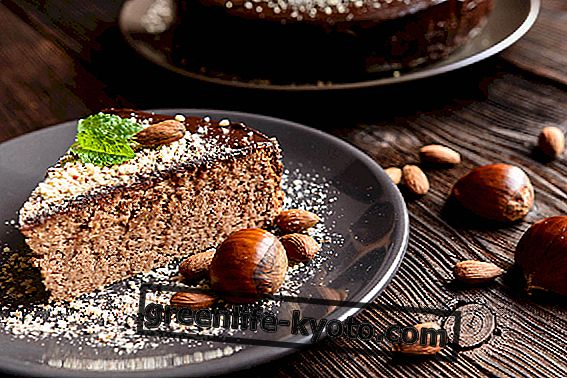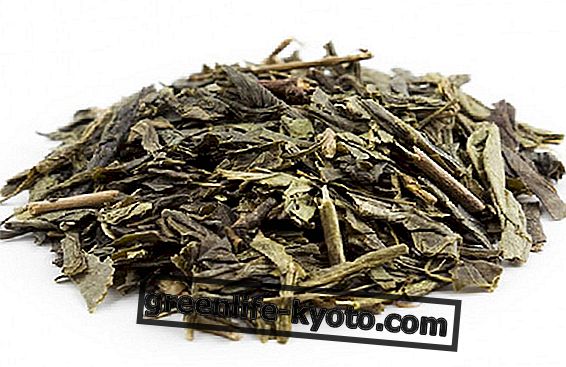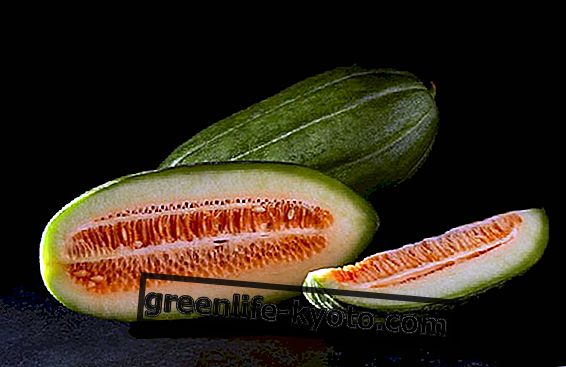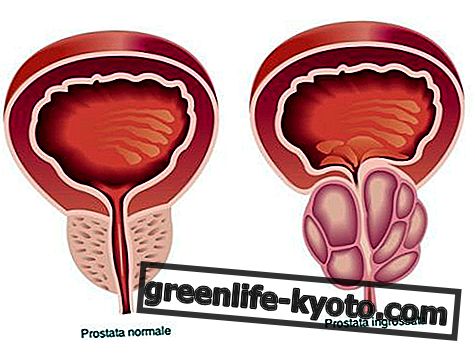The hazelnut, the fruit of the hazel tree ( Corylus avellana L. ), is an easily digestible food, very energetic and able to provide a high caloric intake. Very used in the food industry, it is rich in oleic acid useful against bad cholesterol. Let's find out better.

Properties and benefits of hazelnut
Hazelnuts, like all dried fruit, are a very energetic food able to provide a high caloric intake ( 100 g provide about 655 Kcal easily assimilable, it is, in fact, the oily seed richer in fat and in the meantime more digestible).
The high energy value is given by the good fat content (64%), in particular monounsaturated fats ( oleic acid is the highest with values between 71 and 83% of total fatty acids) and linoleic. It has been amply demonstrated that oleic acid (also contained in extra-virgin olive oil) is an excellent "scavenger" of LDL cholesterol ( bad cholesterol ) and triglycerides, helping to carry out a preventive and protective action against diseases heart.
As for the minor constituents, these are very variable and influenced by multiple factors such as variety, geographical origin, harvest period, agricultural practices. Among these we find Vitamin E , whose content is higher than in olive oil: 35 mg / 100g against 11 mg / 100g. In addition to hindering free radicals and combating aging, thanks to its antioxidant power, Vitamin E plays an important role in protecting against oxidative processes and strengthens the capillary walls.
In addition to vitamin E, hazelnuts show good amounts of B vitamins (niacin and thiamine), in particular hazelnuts are rich in vitamin B6 whose content is between 0.55 and 0.88 mg / 100g.
Finally, the nutritive value of hazelnuts is increased by the significant presence of trace elements (iron, copper, zinc and selenium) and other mineral compounds such as potassium, calcium, phosphorus and magnesium.
The hazelnut, ally of
Some scientific evidence has advanced the hypothesis of a beneficial effect of hazelnuts on human health:
- in cardiovascular diseases ; a study by the Physicians' health study (2002) subjected 21454 subjects to 12-month regular intake of nuts (4 or more portions / week) for 12 months. The assumption is associated with a 30% reduction in the risk of death due to vascular pathology;
- in dyslipidemia ; in particular the content in antioxidants and the composition in fatty acids would determine positive effects on the mobilization of cholesterol, decreasing the levels of LDL and total cholesterol and increasing the quantities of HDL (good cholesterol).
Furthermore, the high content of tocopherols (vitamin E) and ß-sitosterol also has an effect on the control of some types of tumors (colon, prostate and breast).
Does hazelnut make you fat?
Hazelnut, like all dried fruit, does it gain weight?
A consumption of nuts is not associated with weight gain although the calories introduced are increased . The hypotheses of why this happens are three. Dried fruit could induce:
- an increase in energy expenditure;
- an increase in satiety;
- less absorption of other nutrients.
Dried fruits, therefore, in the context of nutritional schemes that take into account the total caloric intake, can become a functional food to control dyslipidemia and paradoxically body weight .
Therefore it can be recommended for children, athletes, students and anyone who is engaged in intellectual or physical activity, indicated for diabetics and dyslipidemics, can be consumed in appropriate portions at breakfast, as an aperitif or at the end of a meal, or as a quick and healthy snack.
Discover also the properties and benefits of hazelnut oil
Plant description and variety
The hazel ( Corylus avellana L. ) is a plant with a bushy habit, smooth and compact bark, dark green and ovoid leaves. The most important species are Corylus avellana (common hazel), Corylus maxima and Corylus colurna (Turkish hazel).
Originally from Europe and Asia Minor it has been cultivated since ancient times already by the Greeks and Romans who appreciated its properties; it is, in fact, one of the oldest plants cultivated by man . For the Celts and in the beliefs of the Piedmontese peasants the core was a magical tree: stories and legends tell that magic creatures were hiding in the bushes.
Production today is concentrated in the countries bordering the Mediterranean: Turkey, Italy, Spain, Greece and France but it is Turkey, with about 700 thousand tons, the world's leading producer (70%); Italy is the second, with 100-125 thousand tons, cultivated in only four regions : Campania, Lazio, Piedmont and Sicily.
The quality of Italian hazelnuts is internationally recognized. In particular, varieties such as the Tonda delle Langhe (Piedmontese) and the Tonda di Giffoni (Campana) - both IGP brand - represent qualitative excellence.
The major hazelnut users are the Swiss (2 kg / person / year) who use them as an ingredient in chocolate.
How the hazelnut is consumed
The consumption of hazelnuts, for 90% of the total production, is destined to the food industry whose use can take place in different forms depending on the type of product to be obtained:
- whole: in pralines, nougats and chocolate bars;
- grain : for snacks, nougat, chocolate fillings and for desserts and ice cream covers;
- hazelnut paste : for obtaining chocolate-based creams and for ice cream;
- hazelnut flour : in biscuits and cakes.
The remaining 10% of hazelnuts are intended for direct consumption as nuts in shell and as toasted hazelnuts . Hazelnut can be eaten fresh or toasted or frozen.
The fresh fruit is covered with a skin that is sometimes difficult to remove (just put them in the oven for a few minutes and then rub them). It keeps a few weeks, then it becomes bitter while with the shell it resists even three months if placed in a dry place.
In the past, alternative uses of hazelnuts have also been proposed: in particular the use for the extraction of high quality oil .
In fact, hazelnut oil (extracted by cold pressing of the fruits) could be used by the confectionery industry to replace other low quality vegetable oils (palm oil, canola, etc.) currently used in confectionery preparations, having this oil also a sweet taste and a delicate aftertaste.
Curiosity about hazelnuts
Nothing is thrown away from the core, everything is used: from the trunk to the fruit. The leaves are used in phytotherapy (they are a natural anti-inflammatory) and in infusion in hot water for healthy herbal teas; put in the freezer they become a pack able to alleviate dark circles.
The oil extracted from the fruit is at the base of many creams, because it is easily absorbed and has soothing properties. It has a purifying action, which is why it is indicated for oily skin: both as a cleanser (also found in soap bars) and as a natural make-up remover.
The shells are an excellent fuel and can be used to protect the base of outdoor plants from frost. With the wood of the hazel it produces a fine embers, used in the manufacture of drawing charcoal.
The hazel rod is used by dowsers to look for water.













